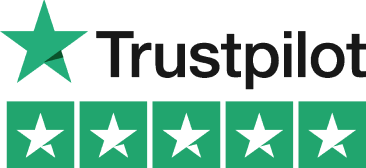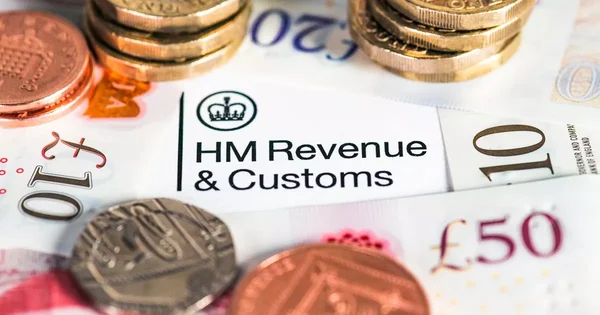Let’s Break This Down Together...
Got a side hustle and not sure if HMRC needs to know about it? If you're earning extra cash, there's a good chance you’ll need to pay tax on it.
This guide covers everything from the £1,000 trading allowance to registering for Self Assessment and claiming your expenses.
We'll also walk you through the new HMRC reporting rules and how to avoid costly mistakes.
By the end, you’ll know what to report, when to register, and how to stay on the right side of HMRC without the stress. Let’s dive in.
Do I Need to Pay Tax on My Side Hustle?
The short answer is: probably yes. HMRC wants to know about most extra income you make, but there are some helpful allowances. Common side hustles include dog walking, selling handcrafted items, vintage clothes, online selling, and providing freelance work or services.
The most important is the £1,000 Trading Allowance. If your side hustle brings in less than £1,000 in a tax year, you typically don’t need to report it or pay tax on it.
Making money or earning money from side hustles, including freelance work, selling goods, or providing services, all count towards the trading allowance. If you sell goods or provide services as a side hustle, you may need to consider paying tax on your earnings once you are paid.
But once you earn more than £1,000, you’ll need to register for Self Assessment and declare your earnings. This applies even if you already have a main job with PAYE. Self employed individuals and those completing an assessment return must follow the same rules. Side hustles can sometimes grow into a full time job.
Remember that this £1,000 is the total across all your side hustles - not £1,000 for each one!
When and How to Register with HMRC for Your Side Hustle
If your side income exceeds £1,000 in a tax year (April 6th to April 5th), you’ll need to register for Self Assessment. The deadline is October 5th following the tax year end. For example, if you earned £1,200 from your Etsy shop between April 2023 and April 2024, you’d need to register by October 5th, 2024.
Registering is straightforward through the HMRC website. You’ll need your National Insurance number and basic personal details. Self employed individuals and those completing an assessment return must register in the same way.
If you’re already employed, don’t worry. You’ll only pay tax on your side income that exceeds your remaining tax-free allowance after your main job takes its share.
The increase in the reporting threshold is part of other measures announced by the government and is expected to be implemented within this parliament. The Exchequer Secretary, James Murray, announced these changes as part of efforts to transform HMRC and modernise tax reporting. If your side hustle involves import or export, customs processes are also being simplified to make compliance easier.

Tax Filing and Payment for Side Hustlers
Understanding how to file and pay tax on your side hustle income is essential for staying on the right side of HMRC. The tax rules for side hustlers are evolving, making it more important than ever to know when and how to submit a self assessment tax return.
The good news is that the tax-free trading allowance of £1,000 still applies, so if your trading income from all side hustles stays below this threshold in a tax year, you don’t need to file a self assessment tax return. However, from the next tax year, the assessment reporting threshold for trading income will rise to £3,000.
To make things easier, HMRC is introducing a new simple online service for side hustlers earning between £1,000 and £3,000. This service allows you to report your trading income and pay your tax bill quickly and easily, without the need to complete a full self assessment.
If your side hustle income exceeds the new reporting threshold, you’ll still need to file a self assessment tax return as usual. Make sure to keep accurate records of all your trading income and expenses, so you’re ready to report and pay what you owe. Staying informed about these changes and using the new service can help you stay compliant and avoid any surprises when it comes to your tax bill.
Meeting Tax Deadlines: Avoiding Penalties
Staying on top of tax deadlines is crucial for side hustlers who want to avoid unnecessary penalties and fines. The UK tax year runs from April 6th to April 5th, and the deadline for submitting your self assessment tax return online is January 31st following the end of the tax year. Missing this deadline can result in an immediate £100 penalty, with further charges if you continue to delay.
To make meeting your tax obligations easier, HMRC and the government have introduced a new simple online service for reporting side hustle income between £1,000 and £3,000. This service streamlines the process, helping you report your income, file your assessment tax return, and pay your tax bill on time.
By using this tool and keeping detailed records of your earnings and expenses, you can ensure you meet all reporting requirements and avoid costly mistakes. The increased assessment reporting threshold also gives side hustlers more flexibility and time to focus on growing their business and boosting their earnings.
By staying organised and making use of the resources available, you can contribute to economic growth and nurture your entrepreneurial spirit, all while keeping your tax affairs in order. Remember, timely filing and payment are key to avoiding penalties and keeping your side hustle running smoothly.

What Expenses Can I Claim Against My Side Hustle?
The good news is you can reduce your tax bill by claiming legitimate business expenses. These directly offset your side hustle income. For example, if you are selling goods, providing services, engaging in online selling, or making and selling handcrafted items, you can claim expenses that you have paid for business purposes, such as materials, packaging, platform fees, or advertising.
If you work from home, you might claim a portion of your heating, electricity, and internet bills. The exact amount depends on how much you use your home for business. Last year, I started selling custom illustrations online. By tracking my art supplies and home office costs, I reduced my taxable profit by nearly 30%.
Other common claims include materials and stock, travel costs related to your business, and website fees. Software subscriptions, phone costs for business calls, and marketing expenses are also deductible.
Keep receipts for everything! HMRC might ask to see them, and they should be kept for at least 5 years after the tax return deadline.
National Insurance on Side Hustle Income
It’s not just income tax you need to think about - National Insurance might apply too.
If your profits from self-employment or freelance work exceed £6,725 (2023/24 rate), you’ll pay Class 2 National Insurance contributions. This currently costs £3.45 per week and is paid if your profits go above the threshold.
Once profits hit £12,570, you’ll also pay Class 4 contributions. That’s 9% on profits between £12,570 and £50,270, and 2% on anything above that.
These thresholds change regularly, so it’s worth checking the current rates on the HMRC website.
Common Side Hustle Tax Mistakes to Avoid
Many side hustlers fall into the same tax traps. Here’s how to stay clear of them.
New online services are expected to reduce the time filling forms, so side hustlers will spend less time on admin and more time growing their business. The benefit of these changes is that they help side hustlers avoid mistakes and focus on making money. The government has also introduced other measures to simplify taxes and tax returns for side hustlers.
Not setting aside money for tax as you earn it. A good rule is to save 25-30% of your profits for your tax bill. Tracking all the ways you earn money is important to ensure you meet your taxes and reporting obligations, especially if you are making money from multiple sources. Missing the Self Assessment deadline (January 31st for online returns). Late filing starts at a £100 penalty and grows the longer you delay.
Mixing personal and business finances. Try to use a separate bank account for your side hustle to make record-keeping simpler. Forgetting about the tax-free allowances. Besides the £1,000 Trading Allowance, there’s also a £1,000 Property Allowance if you’re renting out space.

Final Thoughts
Managing the tax side of your side hustle doesn't need to be stressful. With some basic knowledge and good record-keeping, you can stay on HMRC's good side.
Remember that HMRC is getting increasingly sophisticated at spotting undeclared income. Online platforms now share seller data with tax authorities.
Being honest about your side income from the start helps you avoid interest and penalties. These could wipe out your hard-earned extra cash.
Pie tax: Simplifying Side Hustle Tax
Juggling a day job with a side hustle is hard enough without tax worries keeping you up at night. Pie tax gives you real-time visibility of what you'll owe as you earn.
The UK's first personal tax app is designed specifically for people with multiple income streams. It automatically calculates your combined tax position from employment and side gigs.
We'll send timely reminders about key deadlines and help identify deductions you might otherwise miss. This could potentially save you hundreds of pounds.
Our simple dashboard shows exactly how much to set aside for tax each month. This eliminates those nasty January surprises that side hustlers dread.
Want to see how it works? Pop over to explore the Pie tax app and see how we're making tax less taxing for side hustlers across the UK.
Quick and Easy Guide to add Multiple Income Source
Follow these steps to track multiple income sources and view real-time tax calculations.
To create an income source, find the 'Quick Add' button in the middle of the navigation bar, select 'Create Income Type' from the top of the screen to open the options menu. Fill in the details for your chosen income type, then Save. You can always view or edit this income in “All Incomes.”Step 1

You can view your real-time tax figures directly on the Pie app's home page. Your latest tax calculations are clearly displayed, giving you an instant overview of your current tax position. Step 2













